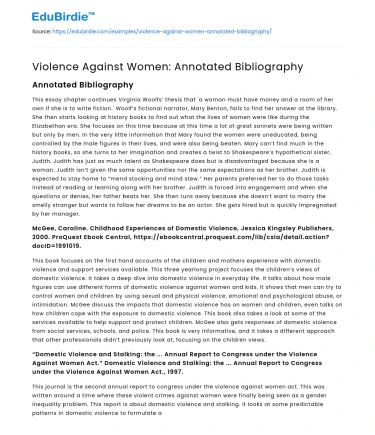Introduction
Violence against women is a pervasive global issue that transcends cultural, economic, and social boundaries. It encompasses a range of abuses, including physical, sexual, and psychological harm, often perpetrated by intimate partners or acquaintances. This essay presents an annotated bibliography to explore the multifaceted nature of violence against women, drawing on scholarly articles and research studies to provide a comprehensive understanding of the subject. By examining various dimensions of this issue, such as societal factors, legislative responses, and psychological impacts, the essay aims to highlight both the prevalence and complexity of violence against women, while also addressing potential solutions and counter-arguments. The discussion will critically evaluate existing literature, offering insights into the effectiveness of different strategies in combating this societal problem.
Societal Factors Contributing to Violence Against Women
One of the primary contributing factors to violence against women is deeply rooted societal norms and cultural practices that perpetuate gender inequality. According to Heise et al. (1999), patriarchal structures and traditional gender roles often underpin the social acceptance of violence, creating environments where women are more vulnerable to abuse. These norms are further reinforced by media portrayals and educational systems that fail to challenge discriminatory attitudes. For instance, a study by Flood and Pease (2009) emphasizes the role of media in normalizing aggressive behavior towards women, thus perpetuating cycles of violence. The research suggests that changing these societal attitudes requires comprehensive educational campaigns and public awareness initiatives aimed at redefining gender norms and promoting equality.
Save your time!
We can take care of your essay
- Proper editing and formatting
- Free revision, title page, and bibliography
- Flexible prices and money-back guarantee
Moreover, the intersectionality of race, class, and gender further complicates the landscape of violence against women. Crenshaw (1991) introduces the concept of intersectionality to explain how women of color experience violence differently due to overlapping systems of oppression. This perspective is crucial for understanding the varied experiences of violence among diverse groups of women and highlights the need for tailored intervention strategies. While societal factors play a significant role, it is essential to consider legislative and policy frameworks that can address these systemic issues effectively.
Legislative Responses and Policy Frameworks
Legislative responses to violence against women have evolved over the years, yet challenges remain in ensuring effective implementation and enforcement. The United Nations Declaration on the Elimination of Violence Against Women (1993) marked a significant step towards international recognition of the issue, urging nations to develop legal frameworks to protect women's rights. However, as noted by Merry (2006), the translation of international norms into local contexts often encounters resistance due to cultural and political barriers. This resistance is evident in countries where laws exist but are inadequately enforced, leading to persistent gaps in protection and justice for victims.
Furthermore, studies by Walby and Allen (2004) highlight the importance of comprehensive policy frameworks that integrate prevention, protection, and prosecution measures. Effective legislation should not only criminalize acts of violence but also provide support services for survivors, such as counseling and legal assistance. Despite these efforts, counter-arguments suggest that legal measures alone are insufficient without addressing underlying social attitudes and power imbalances. Thus, a holistic approach that combines legal action with community engagement and education is essential for meaningful change.
Psychological Impacts and Support Systems
The psychological impact of violence against women is profound and long-lasting, affecting mental health and overall well-being. According to Golding (1999), survivors often experience a range of psychological issues, including depression, anxiety, and post-traumatic stress disorder (PTSD). These effects are compounded by societal stigma and victim-blaming, which can deter women from seeking help. Herman (1992) emphasizes the importance of creating safe spaces for survivors to share their experiences and access support without fear of judgment. Support systems, such as shelters and counseling services, play a critical role in the recovery process, offering both immediate and long-term assistance.
However, the availability and accessibility of these support systems vary significantly across regions, often influenced by economic and infrastructural limitations. For example, rural areas may lack adequate resources, leaving survivors without essential services. Addressing these disparities requires targeted investment and policy interventions to ensure that all women have equal access to support. Additionally, incorporating survivor voices in the development of support programs can enhance their effectiveness and relevance, as survivors are best positioned to identify their needs and priorities.
Conclusion
In conclusion, violence against women is a complex and multifaceted issue that demands a comprehensive and coordinated response. While societal norms and cultural practices contribute to the prevalence of violence, legislative and policy frameworks provide a foundation for addressing these challenges. However, the effectiveness of such measures depends on their implementation and the availability of support systems for survivors. By adopting a holistic approach that integrates legal, social, and psychological dimensions, society can move towards eliminating violence against women. Continued research, advocacy, and collaboration among stakeholders are essential to sustain progress and ensure that all women can live free from violence and fear.






 Stuck on your essay?
Stuck on your essay?

